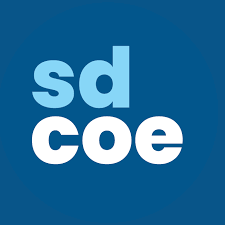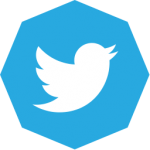Transforming Education Through Equity and Communication in San Diego County
 Strategic communication is essential in creating inclusive, transparent, and community-centered educational policies. San Diego County Office of Education’s (SDCOE) Equity Blueprint for Action is a powerful example of how thoughtful, culturally responsive communication can support equity in education. The Equity Blueprint initiative demonstrates how communication is not only a vehicle for outreach but also a mechanism for listening, co-creating, and empowering historically underserved communities.
Strategic communication is essential in creating inclusive, transparent, and community-centered educational policies. San Diego County Office of Education’s (SDCOE) Equity Blueprint for Action is a powerful example of how thoughtful, culturally responsive communication can support equity in education. The Equity Blueprint initiative demonstrates how communication is not only a vehicle for outreach but also a mechanism for listening, co-creating, and empowering historically underserved communities.
This case study explores in depth how SDCOE’s Equity Blueprint for Action leverages multi-layered communication strategies to engage families, educators, and students, while driving district-level equity policies and practices across the county.
The Initiative: Equity Blueprint for Action
Program Structure and Focus
The Equity Blueprint for Action is a multi-pronged strategic framework developed by SDCOE to guide school districts in recognizing, addressing, and closing equity gaps in education. Aligned with California’s Local Control Funding Formula (LCFF) and Local Control and Accountability Plans (LCAPs), the Blueprint functions as a guiding document for districts aiming to invest more intentionally in students from historically underserved backgrounds.
The Blueprint prioritizes four critical domains:
- Asset-Based Systems: Shifting from deficit-based thinking to approaches that recognize and build on the strengths of students and communities.
- Culturally and Linguistically Responsive Instruction: Embedding inclusive pedagogies and curricula that honor students’ cultural identities and lived experiences.
- Family and Community Engagement: Strengthening meaningful, reciprocal relationships with families and community organizations.
- Student Agency and Voice: Creating platforms for students to actively contribute to educational decision-making processes.
Each of these areas is supported by specific tools, training materials, policy recommendations, and implementation plans tailored to diverse school contexts.
Communication-Driven Program Structure and Implementation
- Inclusive Messaging and Engagement Strategies
From the onset, SDCOE prioritized inclusive and culturally affirming communication to frame the Blueprint and ensure resonance across diverse school communities. Messaging consistently emphasized the values of equity, empowerment, belonging, and collaboration.
To achieve this:
- SDCOE used affirming language and visuals that reflect the racial and cultural diversity of San Diego County’s student population.
- Storytelling and testimonials from educators, students, and community leaders were integrated into communication materials to humanize the call for equity.
- Messaging across all platforms reinforced the idea that achieving equity is a shared responsibility—not only a district initiative, but a county-wide community commitment.
Why It Works:
- When families and educators see their identities reflected in messaging, it builds trust and fosters deeper engagement.
- Framing equity as a collective goal encourages stakeholders to actively participate in implementation rather than viewing it as a top-down mandate.
- Targeted Listening and Community Involvement
SDCOE did not develop the Equity Blueprint in isolation. Communication was used as a key tool to gather insights, validate concerns, and co-create solutions:
- Through World Café-style listening sessions, SDCOE engaged with African American, American Indian, and Latinx community members to better understand how systemic inequities manifest in schools.
- Monthly student panels were hosted to elevate youth perspectives on school climate, cultural representation in curriculum, and barriers to success.
These sessions informed the Blueprint’s direction and ensured its authenticity.
Why It Works:
- Facilitated dialogues foster transparency and accountability by giving voice to those most affected by inequities.
- Authentic communication builds a sense of shared purpose and investment in the resulting strategies.
Communication as a Tool for Capacity Building and Policy Alignment
- Professional Development and Internal Communications
The Blueprint is designed not only as an external-facing tool but also as a resource to align internal communication within and across districts:
- SDCOE offers professional development sessions, implementation workshops, and online webinars to help educators apply equity principles in daily practice.
- Internal newsletters, staff briefings, and implementation checklists ensure consistency of language and clarity of expectations across leadership and school teams.
- Public-Facing Resource Hub
A dynamic, public-facing companion website houses the full Equity Blueprint, including:
- Detailed frameworks, case studies, facilitation guides, and implementation rubrics.
- Regular updates, success stories, and video content to keep stakeholders engaged and informed.
This resource hub functions not just as a repository but as a continuously updated communication channel designed for accessibility and transparency.
Public Awareness and Ongoing Community Engagement
- Sustained Community Communication Channels
SDCOE developed a robust communication ecosystem to keep stakeholders engaged over time:
- Monthly equity-focused newsletters feature updates, educator spotlights, and resource highlights.
- Quarterly stakeholder briefings include progress updates, new initiatives, and opportunities for collaboration.
- Mechanisms for feedback—such as surveys and community check-ins—are built into each phase of implementation.
- Celebrating Impact Through Storytelling
To create emotional resonance and show impact, SDCOE uses storytelling as a central communication strategy:
- Videos, written narratives, and testimonials showcase how the Blueprint is transforming schools and impacting student lives.
- These stories are widely distributed via SDCOE’s social media channels, newsletters, and regional conferences.
Partnerships and Data-Informed Messaging
- Strategic Partnerships
SDCOE collaborates with organizations such as the Parent Institute for Quality Education (PIQE), community-based nonprofits, and local advocacy groups:
- These partners amplify equity messaging through their networks.
- They also act as co-creators and validators of Blueprint resources, ensuring broader cultural relevance and trust.
- Data-Driven Communication
Communication strategies are informed by disaggregated data on student achievement, attendance, discipline, and access to advanced coursework:
- Data dashboards help tailor messages to specific communities.
- Metrics are shared openly with the public, fostering transparency and reinforcing accountability.
![]() Results and Impact
Results and Impact
- Improved Equity Awareness and Policy Alignment
As a result of the Equity Blueprint’s communication framework:
- Multiple districts have revised their LCAPs to align with Blueprint priorities.
- Equity has become a consistent theme in leadership retreats, school board discussions, and strategic planning efforts.
- Increased Community Trust and Engagement
Surveys and feedback loops reveal:
- Increased community satisfaction with district efforts toward transparency and inclusion.
- Stronger relationships between school leaders and communities of color, particularly in areas historically underrepresented in decision-making.
Takeaways: How Communication Advances Educational Equity
- Culturally affirming messaging must be central to any equity initiative—it sets the tone for inclusion and partnership.
- Two-way communication and co-creation make communities feel seen and heard, resulting in better adoption and sustainability of policies.
- Partnerships and storytelling expand reach, build emotional connection, and make the case for equity more compelling.
- Data-informed messaging ensures that communication is targeted, relevant, and outcomes-focused.
Conclusion
San Diego County Office of Education’s Equity Blueprint for Action demonstrates that equitable outcomes in education are not achievable without a strong, culturally grounded communication strategy. Through intentional messaging, inclusive storytelling, responsive engagement, and strategic partnerships, SDCOE models how education systems can lead with equity—by listening first, collaborating always, and communicating with purpose.
Ready to Elevate Your Agency’s Public Communication?
We understand the unique challenges state and local government agencies face—from complex issues to diverse community needs. Our comprehensive approach can help you transform the way you connect with constituents, improve transparency, and highlight the valuable work your agency does every day.
Interested in learning more? Reach out to us today for a consultation. We’d love to discuss how our services can support your goals and help you build lasting trust with the communities you serve.




